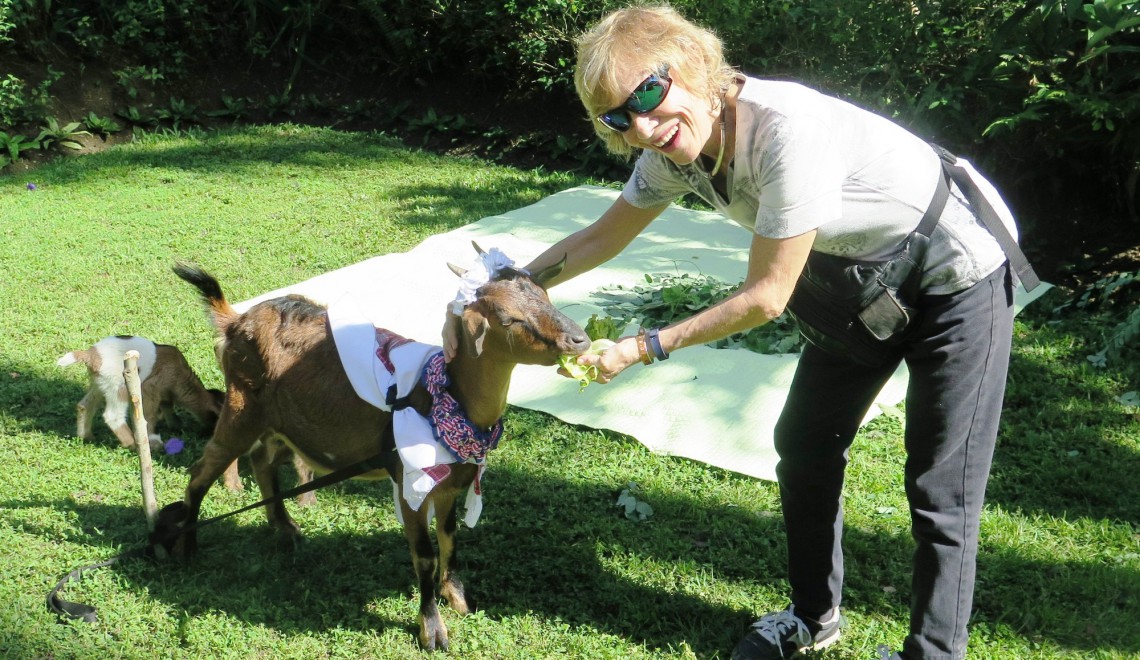Picture this: From 1948 to 1999, the U.S. Department of Navy bombed the hell out of its own country. Okay, maybe that’s an exaggeration, but here’s what happened. From the early 1940’s, the U.S. military used a good part of Vieques, Puerto Rico, a small island off the coast, as a training ground for ship-to-shore gunfire, air-to-ground bombing, and Marine amphibious landings. Up until April 1999, about 120 days a year were devoted to integrated land-sea-air live-fire exercises (i.e., exercises with explosive ammunition) by U.S. aircraft carrier and amphibious-ready groups preparing to deploy overseas. Although residents had strongly objected for decades, it was not until a Puerto Rican security guard was accidentally killed by an errant bomb in April 1999 that the opposition began in earnest, garnering support from the mainland, including political leaders and celebrities from around the world. As of May 2003 all military operations were suspended, leaving the island isolated and decimated, but ironically with much of its undeveloped natural beauty outside the military compounds intact. And therein lies the rub.
Now picture this: From bomb site to beach resort — and therein lies the story. While the Navy has been busy these past 10 years cleaning up the parts of the island it destroyed, the rest of the island is gearing up — albeit slowly — to join the rest of Puerto Rico as a Caribbean tourist destination. Okay, the island still has no traffic light, no movie theater, no American fast-food restaurants (thankfully), and no nightlife. There are a couple of dive operations, horseback riding stables, sailing options and several tour companies. And did I mention a W Hotel? That’s got to mean something. But although the 157-room property is a tourist magnet, the next closest property in size is the 30-room Brik Hotel, which hasn’t yet opened. The rest are guesthouses. The island is not exactly leap-frogging into tourism territory.
But Vieques is not without its unique attractions, two of which are its wild horses, descendants of those brought over by the Spaniard Conquistadors in the 1500’s, and its Bioluminescent Bay, the most glowing — literally — of the five bio-bays that exist in the world. Caveats to come.
First, the horses. They have the run of the island and the hour’s drive from one end of the island to the other can take a lot longer depending upon how many you run into — using the term loosely… We even watched a pool boy at the upscale W chase a horse apparently to deter him from taking a dip in the resort pool. We followed close behind only to find him snacking on the property lawn, posing long enough for us to take his picture. As I turned around, I almost bumped into a sign reading, “Caution: Wild Horses Poop.” And indeed, he had.
And, oh yes, the bio-bay. First some background. The unfortunately aptly named Mosquito Bay, considered the brightest bio-bay in the world, is home to half-plant, half-animal organisms, at a rate of 720,000 per gallon, that emit flashes of bluish/green light when agitated, preferably under a moonless night when the effect is most dramatic. And dramatic it is — as the entire bay explodes beneath you in a fireworks display you’ve never seen before. But not for us. Because of some ill-will of nature, blamed at the time on excessive rain and cool temperatures (for Puerto Rico), the bay was mostly dark.
Still, just the stars alone were worth the trip — almost. With two people to a kayak, the darkness all pervasive, the quiet almost surreal, I felt like I was floating in a private, other-worldly lagoon, hampered only by the knowledge I was experiencing only the slightest remnants of what should have been an amazing Technicolor adventure. Putting my hand in the water released a flurry of gold sparkles, reminiscent of an abundance of Fourth of July sparklers beneath my fingers, as though a vast array of shooting stars from the sky fell into the water — and this was just a fraction of what it should be when a blue-green haze dominates the water and the fish swimming around trigger a reaction that brings the entire bay alive. My disappointment at having missed such a spectacle made me feel like a little kid deprived of a toy I desperately wanted.
There are less than 10,000 people on Vieques — and seemingly, everyone knows everyone else. Locals have a fierce pride in their island and a universal disappointment that so much has been planned or promised and so little has been done. You can see the wistfulness in their eyes as they talk about what the island so desperately needs in terms of education, health care provisions, infrastructure, environmental protections and tourism services.
And in truth, they are also in conflict over how much development they want. More and more foreigners — which is how they allude to Americans, despite their shared U.S. citizenship — are invading their quiet, undeveloped, pristine locale with its sparkling, isolated beaches opening restaurants and other tourist establishments, and they are unsure what the future will bring –- and whether it will be positive. Vieques may or may not be on the verge of a tourist boom, and it’s questionable exactly whom all this new development will actually benefit.
Vieques is a visual delight, a portrait in green and blue — and many shades of brown if you count the horses — and you have to — they’re everywhere. It is undisturbed by development — but that will not always be so. Go now while it is still unspoiled and before it becomes just another over-developed Caribbean island, possibly losing the unique character that is so very much Viequesian.
[box class=”download”]For information about visiting Vieques, call (800) 866-7827 or log onto seepuertorico.com/en/destinations/culebra-and-vieques [/box]






